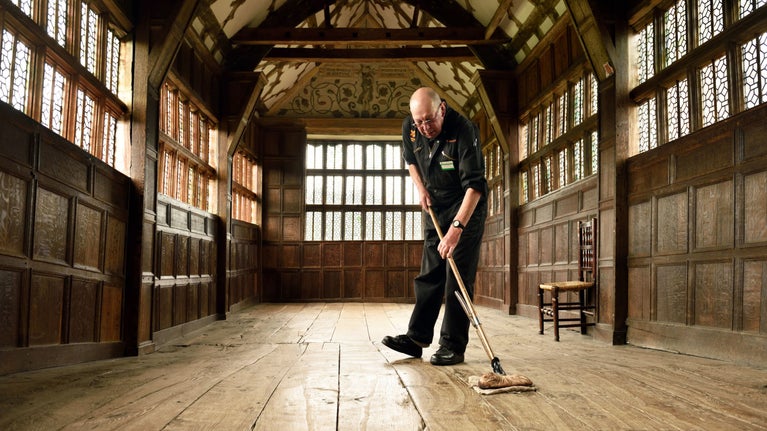
Donate to make a difference
Your support is essential to help us look after nature, beauty and history. Make a donation today, and together we can protect precious places for everyone, forever.

This spring, why not try cleaning your home the National Trust way? We’ve raided our cleaning experts’ toolkit to bring you top tips for keeping your house spick and span.
With over 300 historic properties to look after, we know a thing or two about cleaning. Our biggest houses can need as much as 240 hours of cleaning every week – as well as a small army of staff and volunteers.
With so much space to cover, our experts draw on an array of tips and techniques which have stood the test of time. Where possible we opt for natural cleaning products and old-fashioned methods that are good for the environment.
Among the items famously banned from our cleaning toolkits are yellow dusters, which leave a trail of lint fluff behind. We also have tricks for polishing wooden floors, shining priceless ceramics and dusting century-old books.
National Trust cleaning experts reveal their top tips on how to keep your floors, furniture and ornaments looking their best.

On a visit to a National Trust place in spring you’ll likely see our conservation cleaning in action. Not only does cleaning keep the places we care for looking good, it also gives us the chance to examine the items in the collections for signs of damage or pests.
But we don’t clean everything all the time. And you don’t need to either. Why not devise your own green routine for simple regular tasks and then plan a bigger annual spring clean?
Across the country, teams of conservation volunteers help us keep our collections in tip-top condition. Here are some helpful bits of advice to help you look after your own special possessions.
Use the right cleaning material for the object you're cleaning. Use soft pony hair brushes for metals, glass and porcelain, and hog's hair brushes for plain wood. Glass can also be cleaned with white vinegar.
To avoid damage, always handle things very carefully – they may be more fragile than they look. Ensure your hands are clean and that you're not wearing any rings or bracelets that could snag.
Always note events, names, places and dates (in pencil) on the back of your photographs and record the history of objects you have at home for those who follow.

Your support is essential to help us look after nature, beauty and history. Make a donation today, and together we can protect precious places for everyone, forever.

National Trust conservationists know a thing or two about protecting valuable items. Get some top tips to protect your precious objects.

Explore a selection from more than half a million books and manuscripts in the collections we care for. Libraries Curator Tim Pye takes a closer look at some of the most significant works.

There are many intriguing objects with connections to magic, mystery or death at the places in our care. From a witch's cauldron to death masks and a boat made of bones, discover some of the most mysterious objects in our collections.

We look after more than 27,000 pieces of dress, most belonging to the people who lived and worked in historic houses. From the luxurious to the everyday, explore highlights from the collections, which span over 500 years of changing tastes and fashions.

Learn about some of the misleading objects, paintings and architectural features in the historic houses we look after, and discover the truth behind these optical illusions.

Discover how the use of paint in the historic interiors of four of the houses in our care reveals evolving fashions, new pigments and residents' wealth and status.